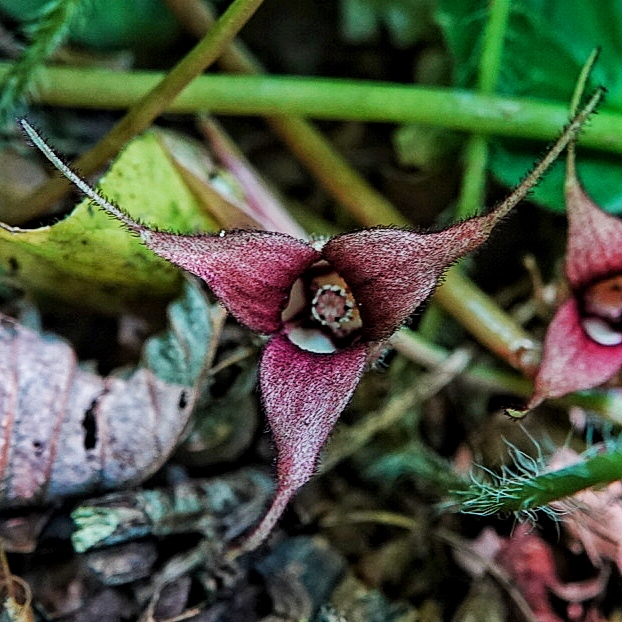
In our region the family Aristolochiaceae (birthworts) is only represented by the genus Asarum. Asarum caudatum (most common common names are western wild ginger and long-tailed wild ginger) has historically been a plant of many usages. It is also aesthetically pleasing year around, it’s evergreen leaves a welcome sight in the winter forest. Sight of these leaves in springtime absolutely requires dropping to my knees to look for the flowers. Because it has a very interesting and unique flower.
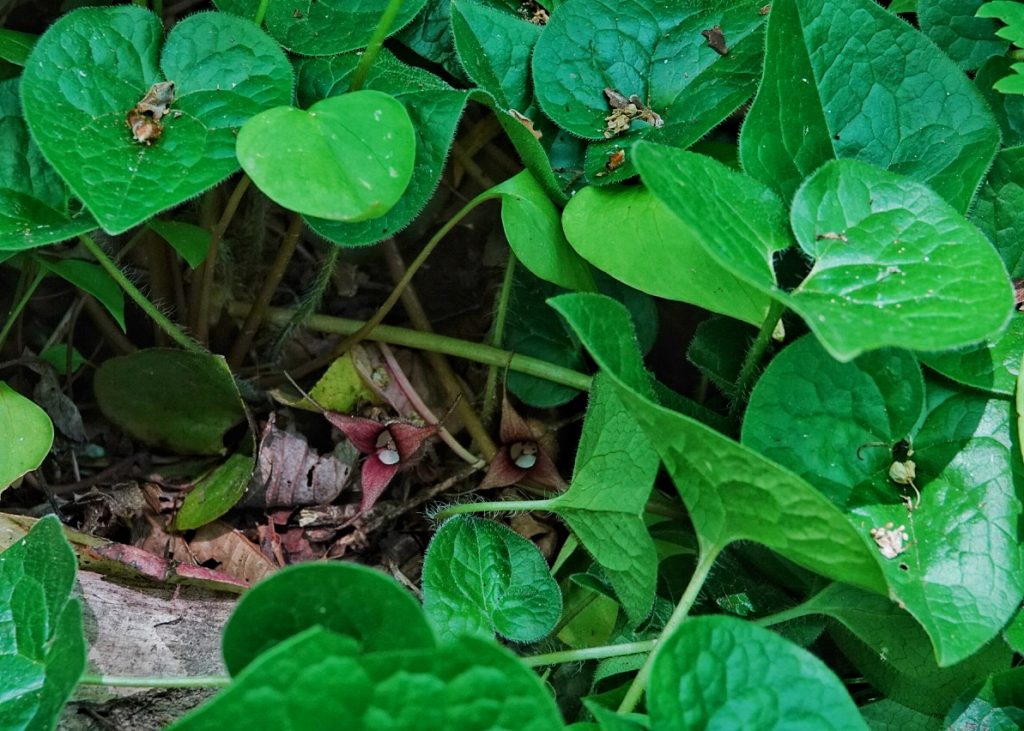
For one thing it is horizontal and comes out beneath the leaves. Actually flower is a bit of a misnomer because what one thinks of as the petals are actually a large calyx with hairy, purplish brown sepals, with a white throat, that taper to long thin ‘tails’ (which is the origin of the common name long-tailed ginger), which spread and bend backwards (reflex) as the flower matures. The actual flower is located within the throat of these sepals, and has no petals, but the 12 stamens are reddish purple and white.
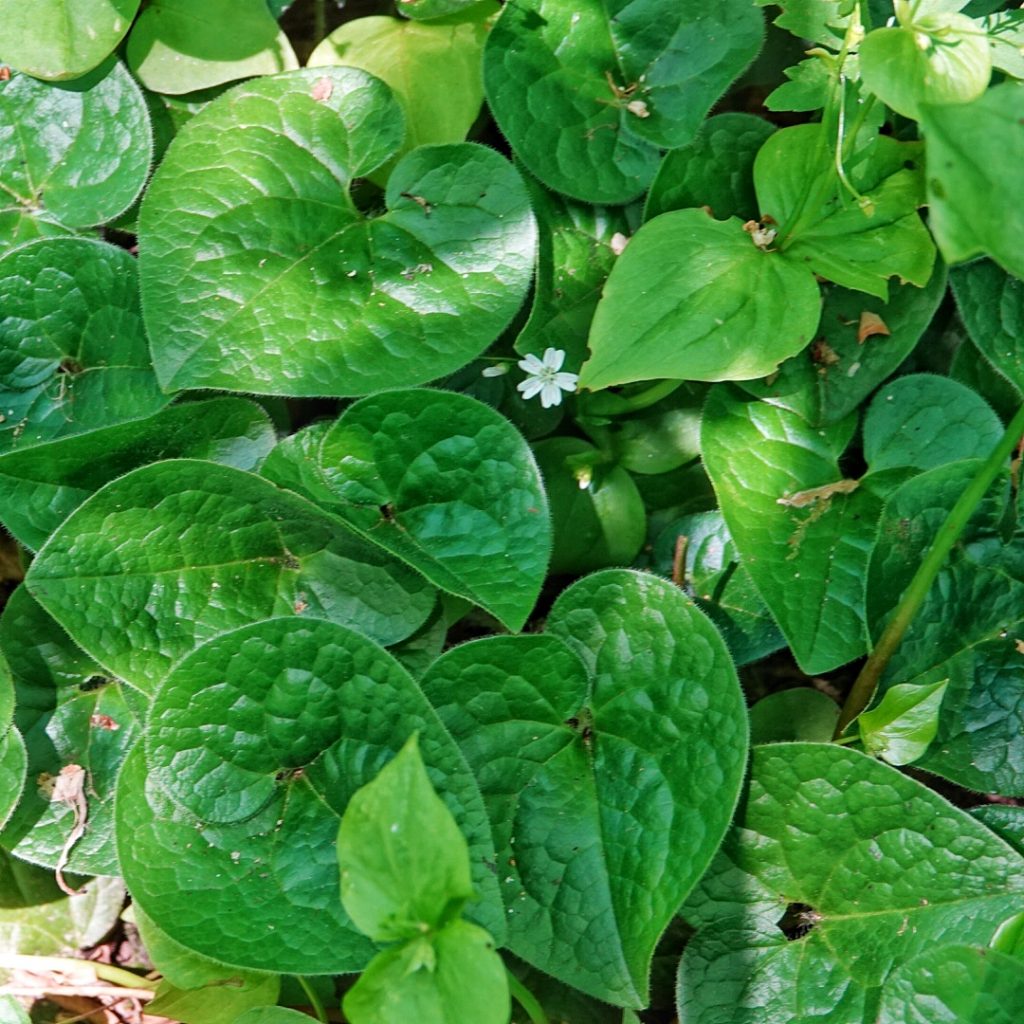
Though the leaves and roots smell like ginger, and the roots have been dried and powdered to form a ginger substitute, plants in the genus Asarum are not related to the ginger used in cooking, Zingiber officinale, which is in its own family, Zingiberaceae.
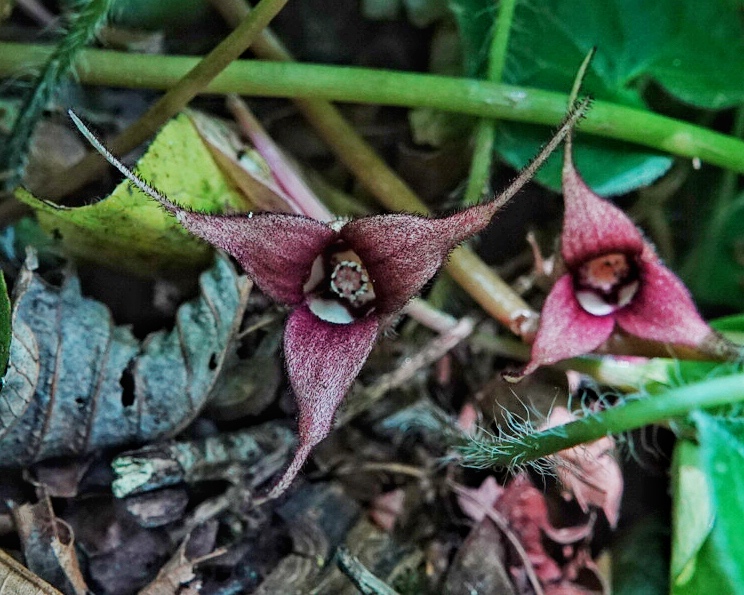
As for its traditional use as a food source and herbal medicine, consumption of Asarum caudatum is not now recommended because, like many members of the family Aristolochiaceae, it contains varying amounts of aristolochic acid, which is nephrotoxic (kidney damaging) and possibly carcinogenic (at least in rats). The toxins evolved to protect the plants from grazing, so the bulk of them are in the leaves and stems, but most roots are not aristolochic acid free.
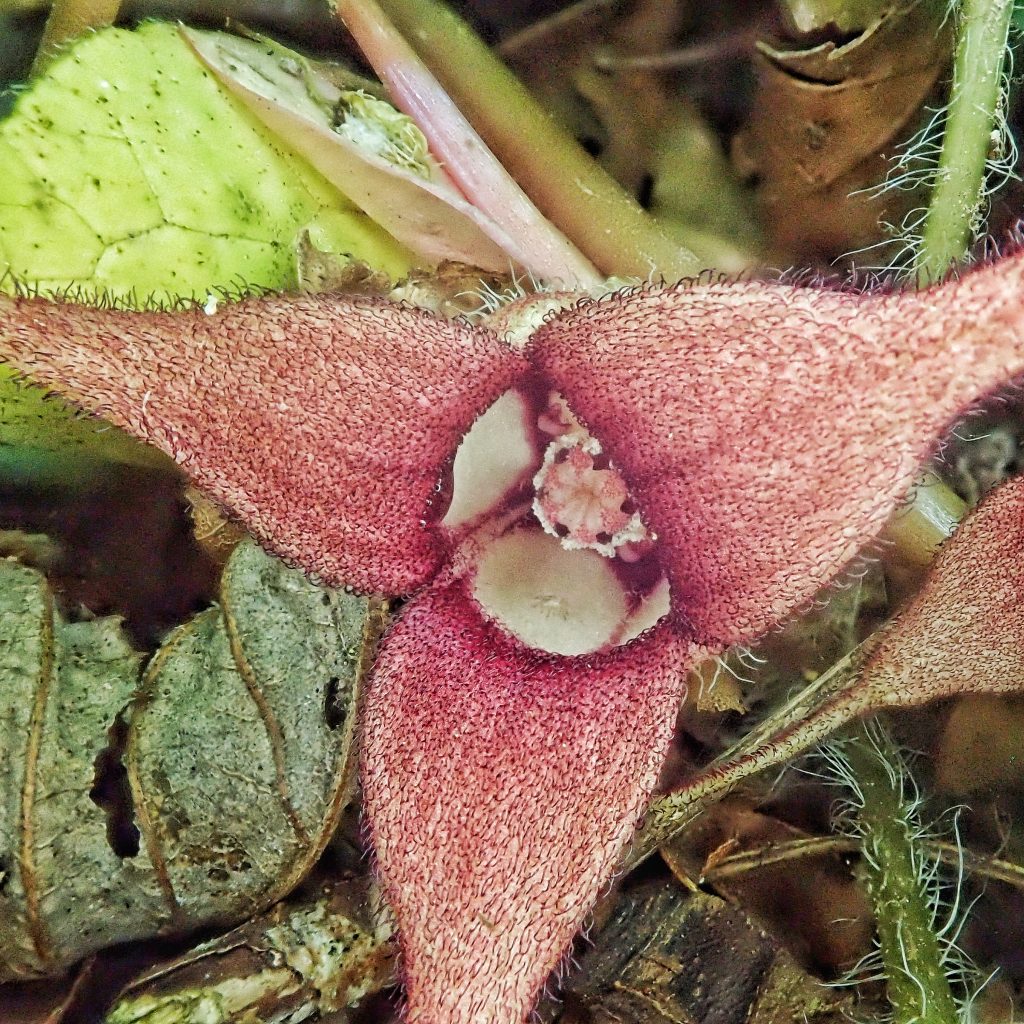
Research into this is ongoing, but results have been inconclusive. This is partly because most of the studies have focused on other species of Asarum, primarily those used in Chinese herbal medicine. The other problem in determining the level of toxicity is that, even in studies that did include Asarum caudatum, there were varying amounts of aristolochic acid in different specimens, even from the same area and of the same species. All in all a ‘look but don’t munch’ policy would seem to be the most prudent.
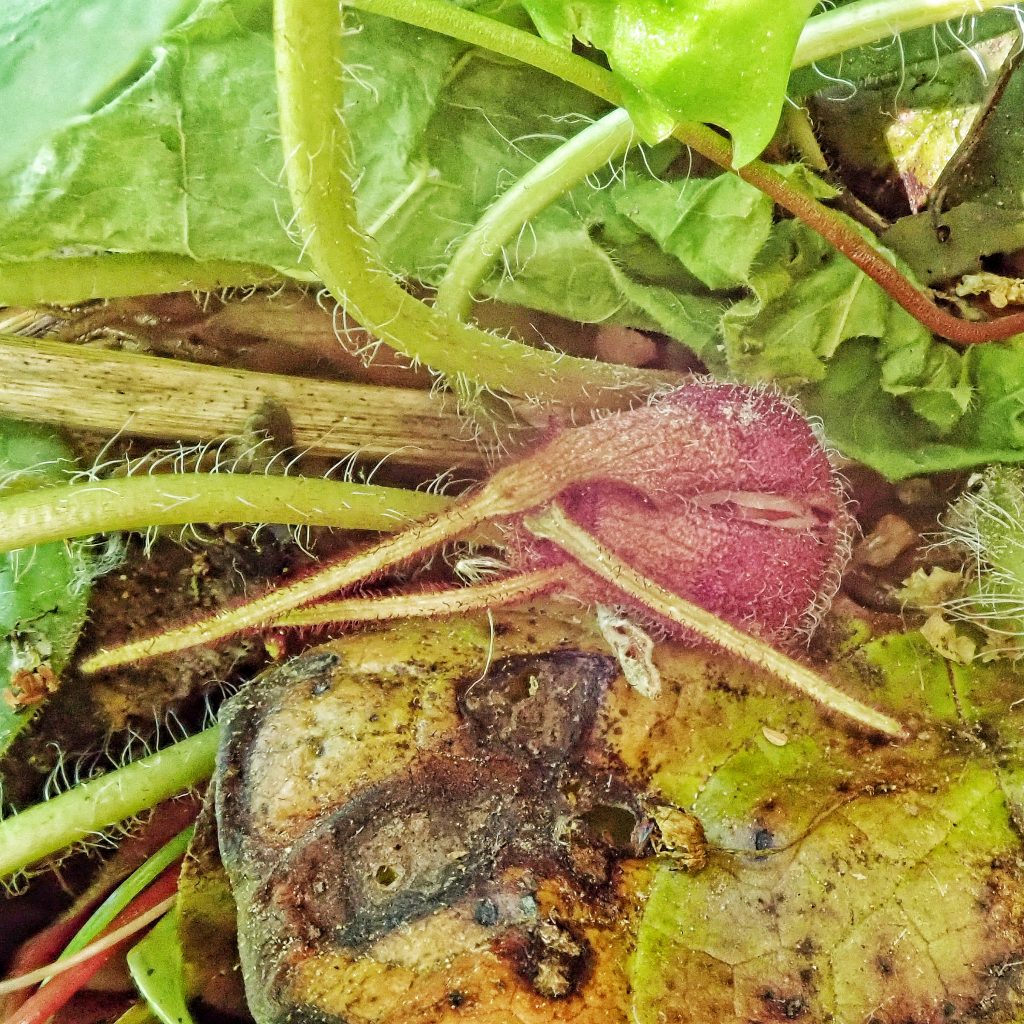
Description– Evergreen perennial which forms mats and spreads by rhizomes and by seeds; leaves are large (up to 3” long), usually dark green, heartshaped, and heavily veined; floral structure is horizontal and hidden by the leaves; the flower itself is small, white with purplish veins, and surrounded by a large hairy, reddish purple to brown or green calyx, that has long, thin, tapering extensions that are either spreading or reflexed backward.
Similar species–A. wagneri has short, green sepals that are bent forward rather than backward, and lack a long, thin ‘tail’; A. marmorata and A. hartwegii have marbled leaves and are only found in sw Oregon/nw California.
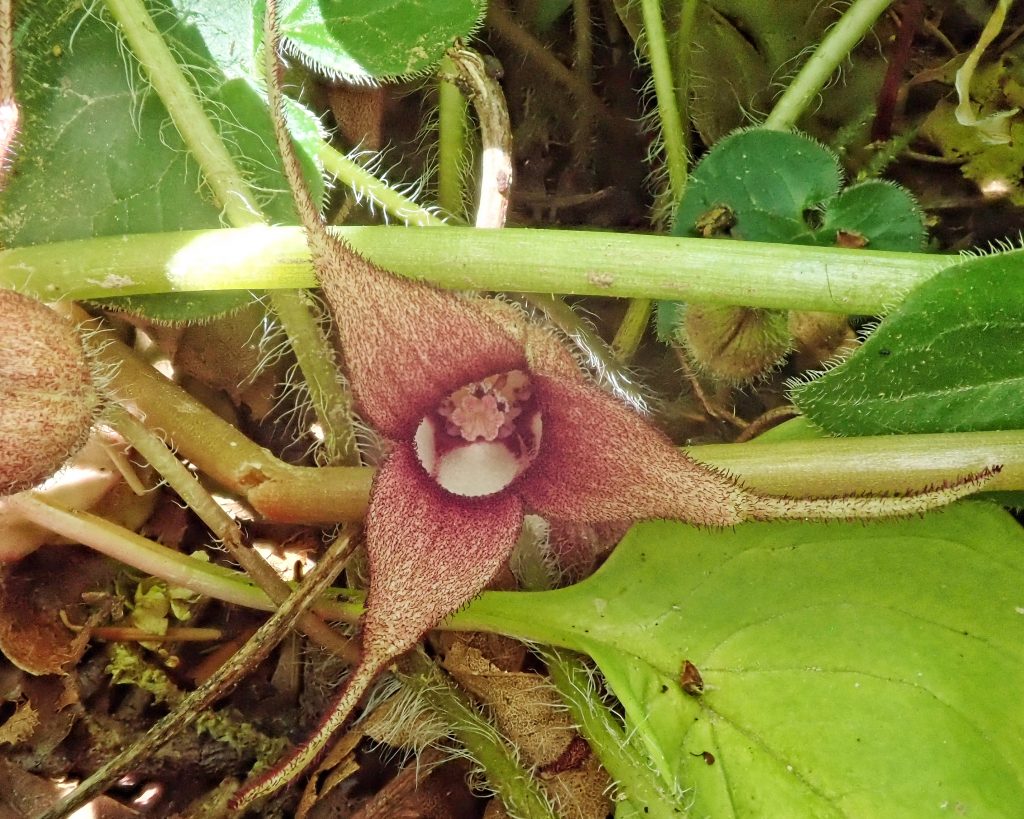
Habitat-Moist to mesic shady areas in forests.
Range-Western North American native; in our region it is found from the east slope of the Cascades west to the Pacific, in nw California, and in the mountains and conifer forests on the eastside.
Reproductive timing-April to July; pollinated primarily by flies; utilizes myrmecochory to disperse seeds.
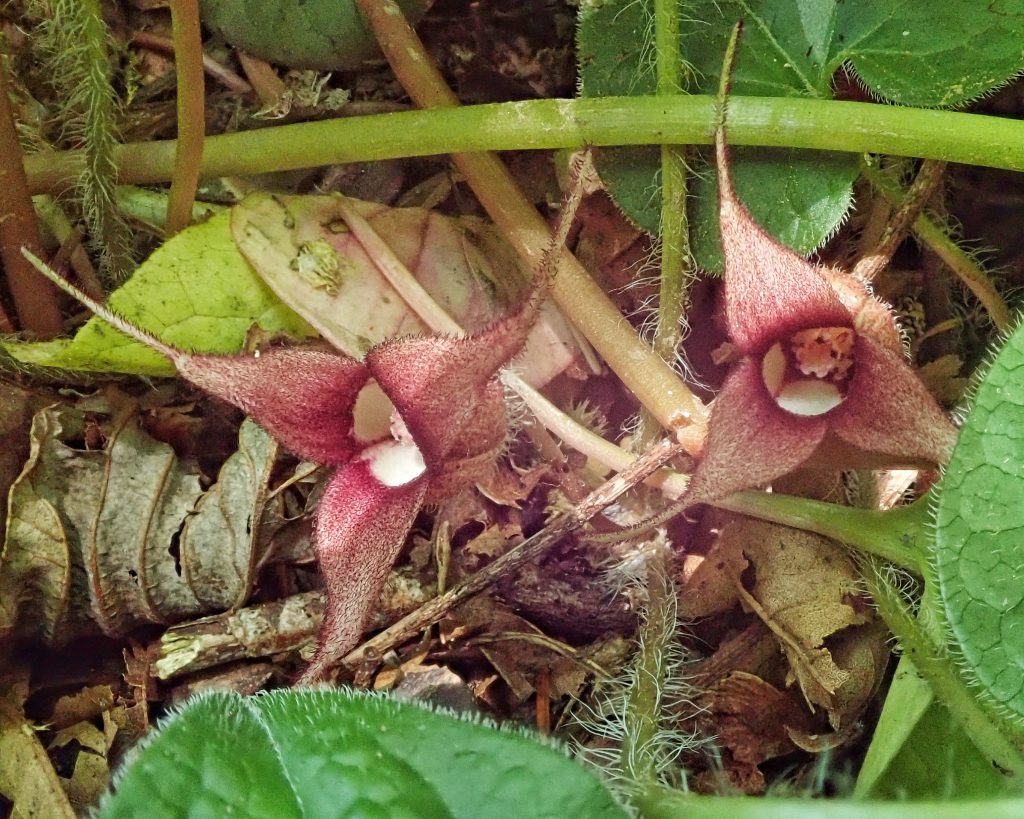
Eaten by-This doesn’t seem to be a larval host for any insects; slugs, snails, feed on the leaves, and pocket gophers and possibly other rodents feed on the seeds; ants relish the elaiosome attached to the seed.
Etymology of names–Asarum is apparently from the Greek word for their wild ginger. Thanks for clarifying that, Craig Sondergaard! The species epithet caudatum is from the Latin for tail, and refers to the long tails of the calyx.
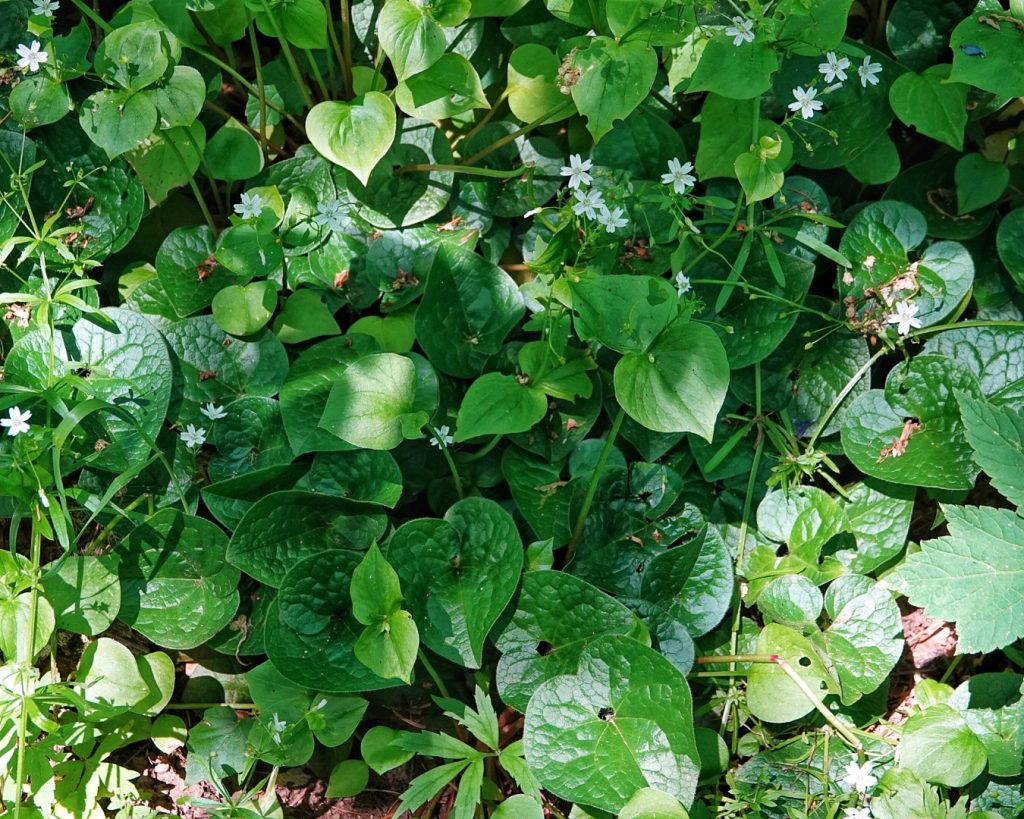
https://www.wnps.org/native-plant-directory/48-asarum-caudatum
https://www.fs.fed.us/wildflowers/plant-of-the-week/asarum_caudatum.shtml
Asarum caudatum | Long-tailed Ginger | Wildflowers of the Pacific Northwest
https://linnet.geog.ubc.ca/Atlas/Atlas.aspx?sciname=Asarum%20caudatum
https://pfaf.org/user/plant.aspx?latinname=Asarum+caudatum
https://portlandnursery.com/natives/asarum/
http://www.missouribotanicalgarden.org/PlantFinder/PlantFinderDetails.aspx?taxonid=276758
http://www.efloras.org/florataxon.aspx?flora_id=1&taxon_id=102755
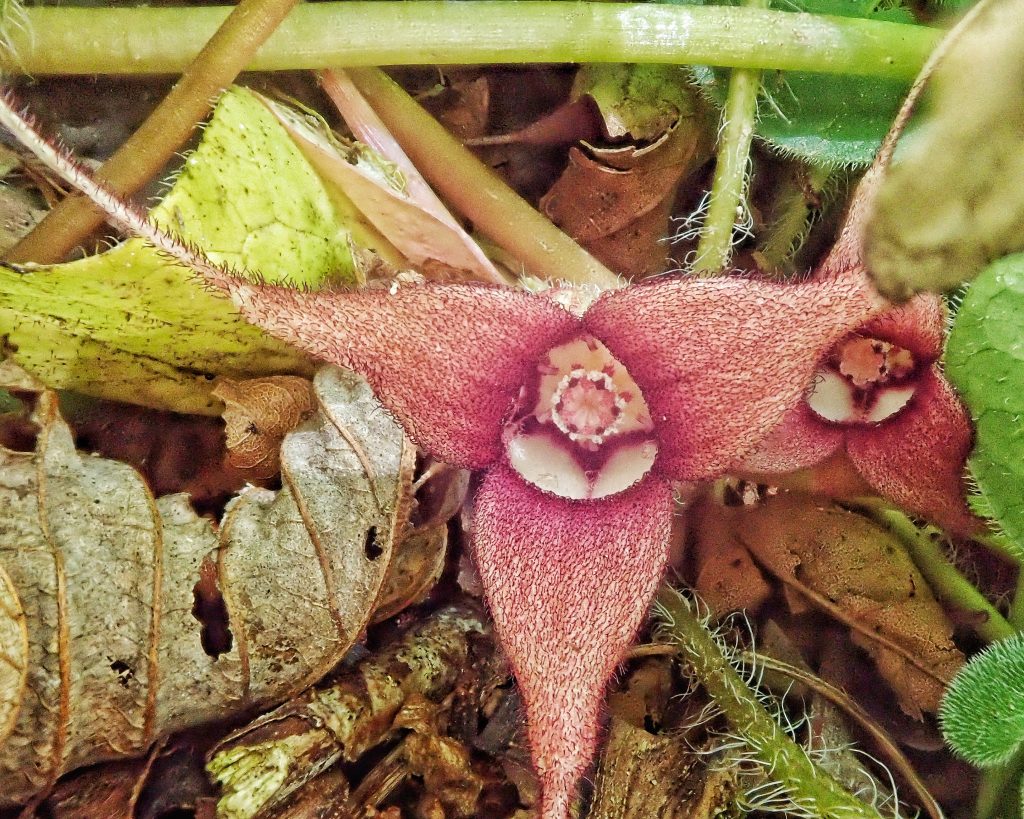
Thank you for this important information & very interesting profile! 👍
As you know Dan, I rarely look into the etymololgy of scientific names. However, I remember looking this one up years ago when I was trying to figure out it’s botanical and ethnobotanical relationship to culinary ginger. I found the reference I read back then in my copy of “A Source-Book of Biological Names and Terms” (3rd Edition 1955) by E.C. Jaeger.
“asar–Gr. asaron, the asarabacca, a low stemless shrub. Ex: asari-folia; Asarum.”
I don’t know how relevant this is to you, but I just threw it out there (plus it’s almost midnight, so I didn’t want to call you). In addition, I just found that if you google asaron, you get these (and more):
https://en.wiktionary.org/wiki/asaro
http://www.lewis-clark.org/article/2534
BTW, did you come across hazelwort or wild nard as common names for Asarum. Also I remember recommending Jaeger’s book to you, but I don’t remember if you bought it. It has “…12,000 elements from which scientific biological names and terms are made.” Talk to you later.
Thanks Craig! For some reason I thought ‘Composition of scientific words’ by RW Brown was the book you recommended, and that’s what I’ve been using. But I just ordered Jaeger’s book.
I did see some other common names but they weren’t species specific so I didn’t include them. The Lewis and Clark thing never came up in my research because they have the plant listed as Asarum canadense.